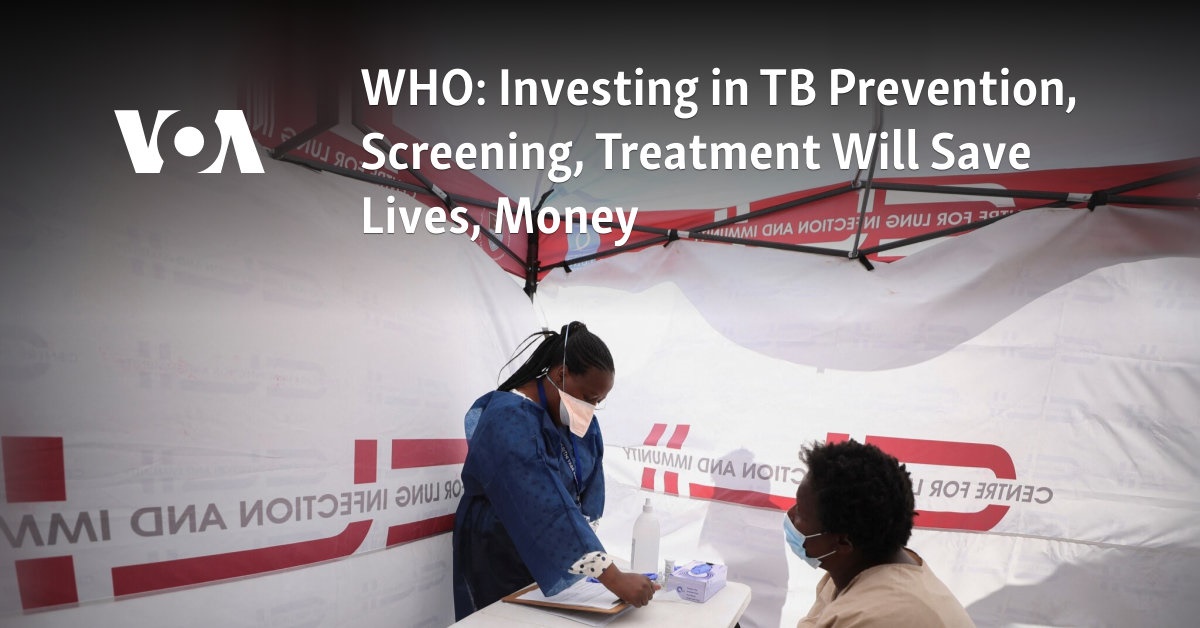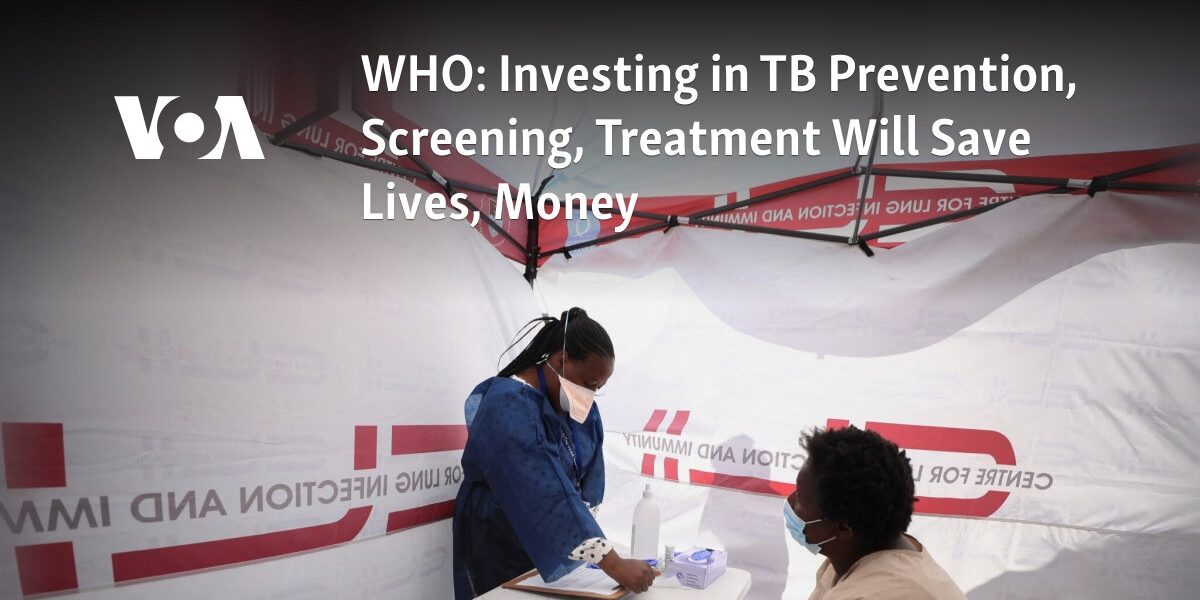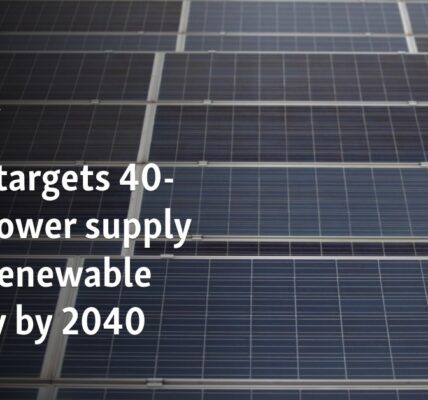Investing in measures to prevent, screen, and treat tuberculosis can lead to saving both lives and money.

Geneva —
On World Tuberculosis Day, the World Health Organization is urging for efforts to eliminate this age-old disease that has affected and claimed the lives of countless individuals.
The theme for this year, “Yes! We can put an end to TB,” aims to convey a positive message that it is possible to bring an end to the epidemic, which the WHO reports results in 1.3 million deaths each year.
Although the illness can be treated and avoided, leaders at the 2023 United Nations meeting on tuberculosis projected a requirement of $13 billion annually for efforts to prevent, diagnose, treat, and support in order to eradicate the epidemic by 2030.
The leaders of each country, who promised to expedite efforts to eradicate tuberculosis and to put these promises into actual practice, agreed on a set of worldwide goals to propel this initiative.
Dr. Tereza Kasaeva, director of the Global Tuberculosis Program at WHO, stated that their efforts aim to achieve 90% coverage of TB prevention and care services for those in need. This involves utilizing WHO-approved rapid tests and the primary method of diagnosing TB, as well as offering a comprehensive health and social benefit plan to all individuals with tuberculosis.
This marks a turning point in the worldwide efforts to eradicate tuberculosis. The upcoming five years will be crucial in transforming the current political drive into tangible steps towards achieving global TB goals.
Tuberculosis is currently the second most fatal infectious disease globally, ranking after COVID-19 and surpassing HIV and AIDS. According to the World Health Organization, approximately 1.3 million individuals lost their lives to TB in 2022 and an estimated 10.6 million became sick with the illness.
The number of new cases reported is the greatest it has been since the organization began tracking the illness in 1995. According to the World Health Organization, this sudden increase could be connected to delays in treatment as a result of the COVID-19 pandemic.
Tuberculosis (TB), a respiratory illness, is transmitted through coughing, sneezing, or spitting by those who are infected. It can be found across all nations and among individuals of all ages.
According to Saskia Den Boon, technical officer of the WHO Global TB Program, it is crucial to prevent TB infection and halt its progression from infection to disease in order to effectively decrease its incidence rates as outlined in the anti-TB strategy.
”
A crucial aspect in reducing global health issues is the implementation of TB preventive treatment. WHO advises it for individuals with HIV, close contacts of those with TB, and other high-risk populations.
She stated that plans for offering preventative treatment are frequently connected to screening in order to identify and treat individuals at an earlier stage of their illness. This can aid in preventing the spread of the disease and enhance the overall outcome for patients.
In recent times, advancements in tools recommended by the World Health Organization have improved the possibility of TB screening. These include shorter courses of preventive treatment lasting one or three months, as well as a novel skin test for detecting TB infection based on antigens.
According to Den Boon, the World Health Organization suggests utilizing artificial intelligence (AI) to aid in the detection of tuberculosis abnormalities on chest x-rays, along with other screening methods.
The World Health Organization (WHO) published a research project which analyzes the expenses and advantages of screening and preventative treatment in four specific nations: Brazil, Georgia, Kenya, and South Africa.
Den Boon stated that the investment case studies demonstrated the potential for tuberculosis episodes to be prevented and lives to be saved through investment in TB screening in all four countries.
According to the modeling results, even small investments can lead to substantial health and economic advantages in all four nations. Looking at it from a wider societal standpoint, the intervention plan resulted in cost-savings for all four countries. The return on investment varied across countries, with a potential gain of $39 for every dollar invested.
According to WHO scientists, timely identification plays a critical role in addressing, treating, and stopping the transmission of tuberculosis. Likewise, they recognize the significance of creating novel vaccines to prevent and ultimately eliminate the disease.
Currently, the only available vaccine for children to prevent tuberculosis is the BCG vaccine, which has been in use for 100 years.
Kasaeva stated that it is completely unacceptable that despite numerous advancements in the 21st century, a new effective TB vaccine is still not available.
The director general of WHO, Tedros Adhanom Gebreyesus, initiated a TB Vaccine Accelerator Council in the previous year to raise awareness of the issue and secure funding for further research and development.
She stated that the United Nations high-level meeting is supporting the World Health Organization’s initiative and mentioned that this support will lead to the development of new tuberculosis vaccines in the next five years.
The speaker stated that there are over 16 potential candidates in the process, with some of them being in the later stages. However, they are in need of increased attention, prioritization, and investment.
Source: voanews.com




